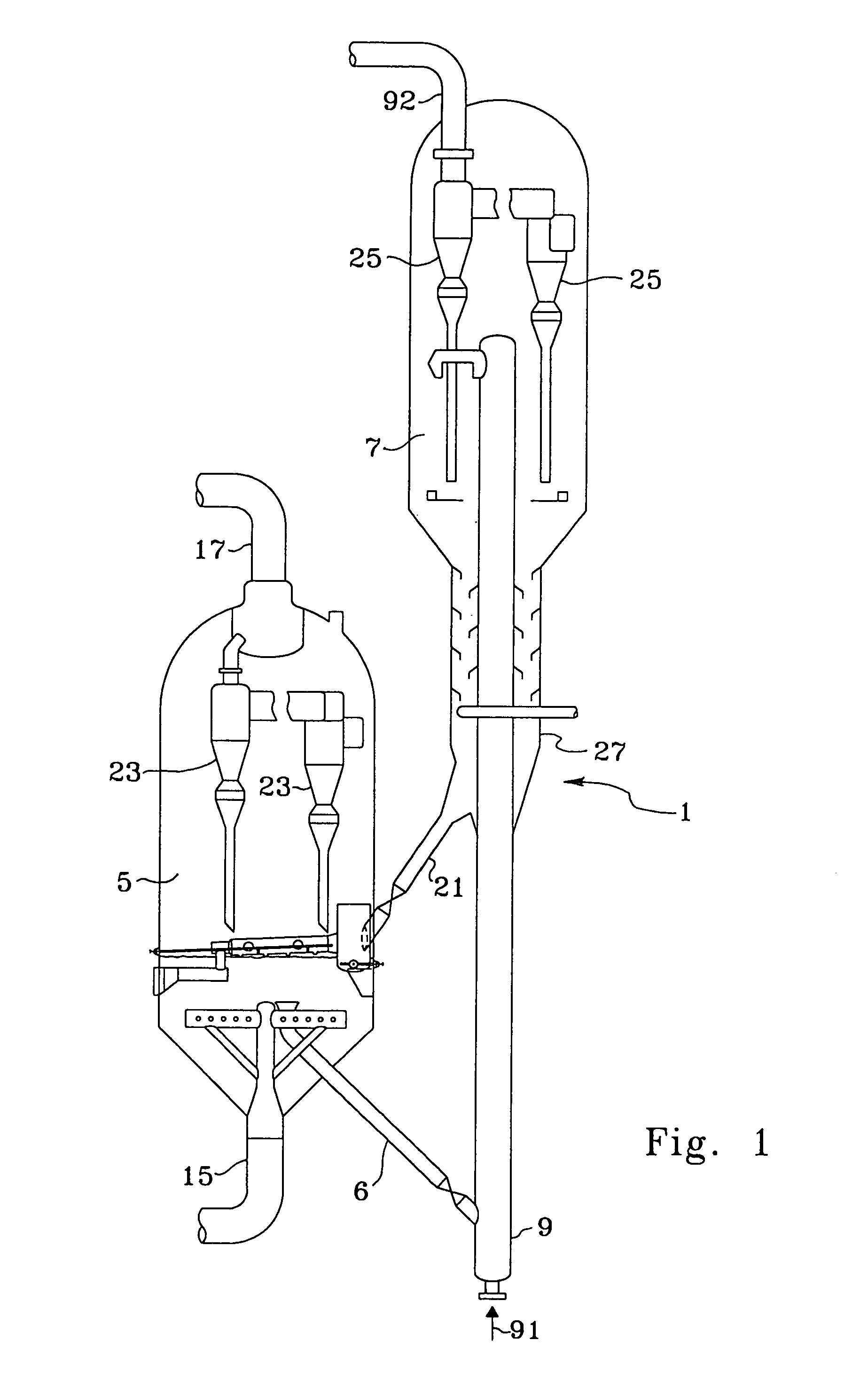FCC spent catalyst distributor
a distributor and catalyst technology, applied in the direction of physical/chemical process catalysts, furnaces, lighting and heating apparatus, etc., can solve the problems of high oxygen concentration localized areas, bubbling bed regenerators, and more severe problems, so as to simplify the reduction or elimination of non-uniformities
- Summary
- Abstract
- Description
- Claims
- Application Information
AI Technical Summary
Benefits of technology
Problems solved by technology
Method used
Image
Examples
Embodiment Construction
[0034]An FCC process unit, generally referred to with reference numeral 1 and shown schematically in FIG. 1, generally comprises two main zones for reaction and regeneration. A reaction zone is usually comprised of a vertical conduit, or riser 9, as the main reaction site, with the effluent of the conduit emptying into a large volume process vessel, which may be referred to as a separation vessel 7. In the reaction zone, a feed stream 91 is contacted with a finely divided fluidized catalyst at an elevated temperature and at a moderate positive pressure. The feed stream 91 to the FCC unit consists of a mixture of hydrocarbons having boiling points above about 232° C. In the riser, feed is contacted with a relatively large fluidized bed of catalyst. The residence time of catalyst and hydrocarbons in the riser needed for substantial completion of the cracking reactions is only a few seconds. The flowing vapor / catalyst stream leaving the riser 9 passes from the riser to a solids-vapor s...
PUM
| Property | Measurement | Unit |
|---|---|---|
| angle | aaaaa | aaaaa |
| angle of intersection | aaaaa | aaaaa |
| temperatures | aaaaa | aaaaa |
Abstract
Description
Claims
Application Information
 Login to View More
Login to View More - R&D
- Intellectual Property
- Life Sciences
- Materials
- Tech Scout
- Unparalleled Data Quality
- Higher Quality Content
- 60% Fewer Hallucinations
Browse by: Latest US Patents, China's latest patents, Technical Efficacy Thesaurus, Application Domain, Technology Topic, Popular Technical Reports.
© 2025 PatSnap. All rights reserved.Legal|Privacy policy|Modern Slavery Act Transparency Statement|Sitemap|About US| Contact US: help@patsnap.com



